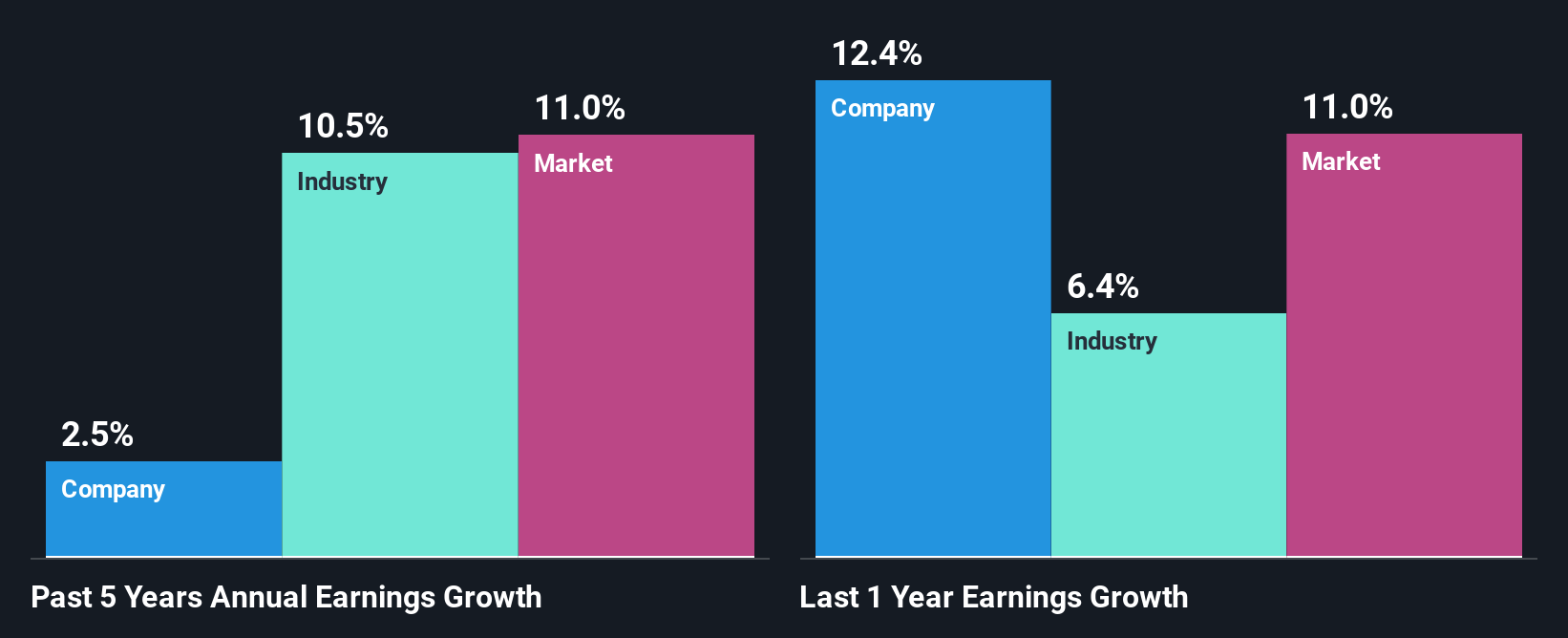- Brazil
- /
- Telecom Services and Carriers
- /
- BOVESPA:VIVT3
Telefônica Brasil S.A.'s (BVMF:VIVT3) Financials Are Too Obscure To Link With Current Share Price Momentum: What's In Store For the Stock?
Telefônica Brasil's (BVMF:VIVT3) stock is up by 7.9% over the past three months. However, we decided to study the company's mixed-bag of fundamentals to assess what this could mean for future share prices, as stock prices tend to be aligned with a company's long-term financial performance. In this article, we decided to focus on Telefônica Brasil's ROE.
Return on equity or ROE is an important factor to be considered by a shareholder because it tells them how effectively their capital is being reinvested. In other words, it is a profitability ratio which measures the rate of return on the capital provided by the company's shareholders.
How Do You Calculate Return On Equity?
ROE can be calculated by using the formula:
Return on Equity = Net Profit (from continuing operations) ÷ Shareholders' Equity
So, based on the above formula, the ROE for Telefônica Brasil is:
8.5% = R$5.8b ÷ R$68b (Based on the trailing twelve months to June 2025).
The 'return' is the amount earned after tax over the last twelve months. That means that for every R$1 worth of shareholders' equity, the company generated R$0.09 in profit.
Check out our latest analysis for Telefônica Brasil
Why Is ROE Important For Earnings Growth?
So far, we've learned that ROE is a measure of a company's profitability. We now need to evaluate how much profit the company reinvests or "retains" for future growth which then gives us an idea about the growth potential of the company. Assuming everything else remains unchanged, the higher the ROE and profit retention, the higher the growth rate of a company compared to companies that don't necessarily bear these characteristics.
Telefônica Brasil's Earnings Growth And 8.5% ROE
It is hard to argue that Telefônica Brasil's ROE is much good in and of itself. However, when compared to the industry average of 6.3%, we do feel there's definitely more to the company. Still, Telefônica Brasil has seen very little net income growth of 2.5% over the past five years. Bear in mind, the company does have a low ROE. It is just that the industry ROE is lower. So that's what might be causing earnings growth to stay low.
As a next step, we compared Telefônica Brasil's net income growth with the industry and were disappointed to see that the company's growth is lower than the industry average growth of 11% in the same period.

The basis for attaching value to a company is, to a great extent, tied to its earnings growth. The investor should try to establish if the expected growth or decline in earnings, whichever the case may be, is priced in. By doing so, they will have an idea if the stock is headed into clear blue waters or if swampy waters await. Has the market priced in the future outlook for VIVT3? You can find out in our latest intrinsic value infographic research report.
Is Telefônica Brasil Making Efficient Use Of Its Profits?
Telefônica Brasil has a three-year median payout ratio of 68% (implying that it keeps only 32% of its profits), meaning that it pays out most of its profits to shareholders as dividends, and as a result, the company has seen low earnings growth.
Moreover, Telefônica Brasil has been paying dividends for at least ten years or more suggesting that management must have perceived that the shareholders prefer dividends over earnings growth. Upon studying the latest analysts' consensus data, we found that the company's future payout ratio is expected to rise to 123% over the next three years. However, Telefônica Brasil's future ROE is expected to rise to 13% despite the expected increase in the company's payout ratio. We infer that there could be other factors that could be driving the anticipated growth in the company's ROE.
Conclusion
In total, we're a bit ambivalent about Telefônica Brasil's performance. Specifically, the low earnings growth is a bit concerning, especially given that the company has a respectable rate of return. Investors may have benefitted, had the company been reinvesting more of its earnings. As discussed earlier, the company is retaining a small portion of its profits. That being so, the latest analyst forecasts show that the company will continue to see an expansion in its earnings. To know more about the latest analysts predictions for the company, check out this visualization of analyst forecasts for the company.
Valuation is complex, but we're here to simplify it.
Discover if Telefônica Brasil might be undervalued or overvalued with our detailed analysis, featuring fair value estimates, potential risks, dividends, insider trades, and its financial condition.
Access Free AnalysisHave feedback on this article? Concerned about the content? Get in touch with us directly. Alternatively, email editorial-team (at) simplywallst.com.
This article by Simply Wall St is general in nature. We provide commentary based on historical data and analyst forecasts only using an unbiased methodology and our articles are not intended to be financial advice. It does not constitute a recommendation to buy or sell any stock, and does not take account of your objectives, or your financial situation. We aim to bring you long-term focused analysis driven by fundamental data. Note that our analysis may not factor in the latest price-sensitive company announcements or qualitative material. Simply Wall St has no position in any stocks mentioned.
About BOVESPA:VIVT3
Telefônica Brasil
Operates as a mobile telecommunications company in Brazil.
Solid track record with mediocre balance sheet.
Similar Companies
Market Insights
Community Narratives



